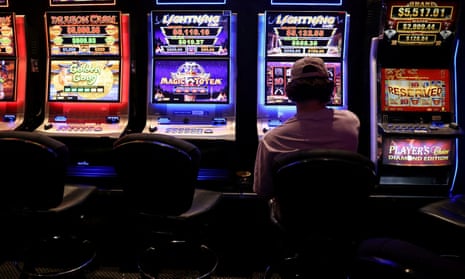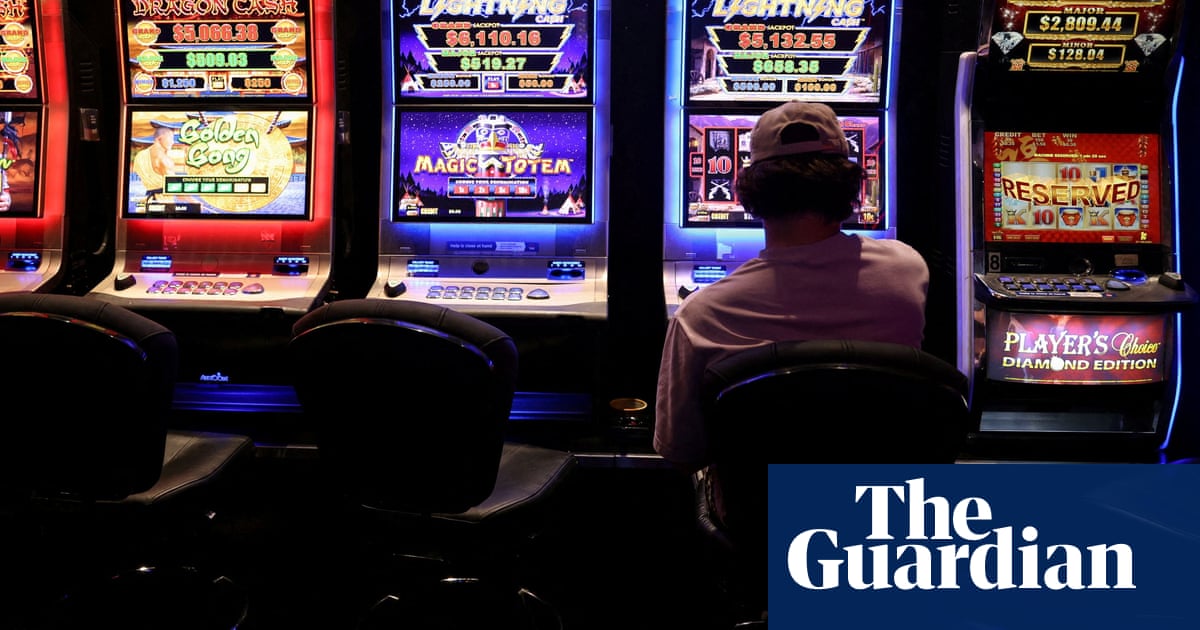Western Australia shows the harm poker machines are doing to the rest of the country
Pokies are banned in the state everywhere except casinos – and it has the lowest rates of gambling losses per capita in Australia to show for it

While clubs in New South Wales and Victoria have been embroiled in acrimonious battles in recent months over their reliance on poker machine revenue, there is one state where they are banned – and where gambling losses are much lower.
In Western Australia poker machines are allowed only in the casino. It has the lowest rates of gambling losses per capita in the country, and reported symptoms of problematic gambling are higher in the other states, experts say.
“Because [poker machines] are concentrated in just one venue in a casino in Perth, then people are not as exposed in Western Australia to … what is really the most harmful form of gambling that we’ve got in Australia,” says Dr Angela Rintoul, a senior research fellow in public health at Federation University.
There were just over 2,400 machines in Western Australia in 2018-19 – the last non-pandemic year for which comprehensive data is available – which works out at less than one per 1,000 residents. In the same year there were more than 91,000 machines in NSW, more than 10 times as many per capita.
The huge discrepancy in the number of gaming machines is reflected in gambling expenditure. Total gambling expenditure per capita in Western Australia is less than what is lost per capita on poker machines alone in NSW, and has been for more than a decade.
You can explore gambling expenditure by type and state in the interactive below.
Rintoul says that unlike wagering or lotteries, which each make up a significant chunk of Western Australia’s per capita gambling expenditure, poker machines are “designed to create addiction”.
“This machine is the perfect kind of money trap,” she says.
“Wagering is still a problem, obviously, but [the problem with machines] is a combination of the way that machine is able to trigger the release of dopamine through these kinds of tricks that has gone inside it, alongside the widespread availability in most of Australia.”
The productivity commission has previously found that about 85% of people who experience gambling harm report electronic machines as the main problem. But experts say there isn’t much research on the differences in gambling harm between states.
Dr Francis Markham, a research fellow at the Australian National University, estimates from unpublished research that the rest of Australia reports 1.6 times more problem gambling symptoms than WA, based on the latest Hilda survey.
He says it appears the money that would have been gambled if poker machines were more common in Western Australia is not going to other forms of gambling, as research suggests there is “far from a one-to-one substitution effect, if any” between forms of gambling (contrary to claims around the proposed introduction of the cashless gaming card in NSW).
Gambling makes up almost half the revenue of social clubs across the country, and up to 17% for pubs and clubs, according to recent IbisWorld reports. Because of Western Australia’s restrictions on gaming in clubs, the figures are likely to be higher than this in the other states.
Rintoul’s previous research has shown that poker machines in the states where they are more widespread are disproportionately found in areas of greater disadvantage. Guardian Australia has also found disproportionate gaming machine expenditure at RSLs in more disadvantaged areas of Victoria.
“The industry knows where they’ll make money,” Rintoul says.
Nor does the lack of poker machines in WA seem to have reduced the viability of clubs significantly. NSW does have a disproportionately large share compared with other states, but the number of clubs in Western Australia is only slightly lower than what would be expected, given its population.
About 40% of social clubs are in NSW, which has just over 30% of the population, according to IbisWorld. Western Australia has 8.2% of the clubs and 10% of the population.
“We’ve allowed these really high-intensity machines to be part of our social fabric inside suburban and regional area, especially in NSW,” Rintoul says.
